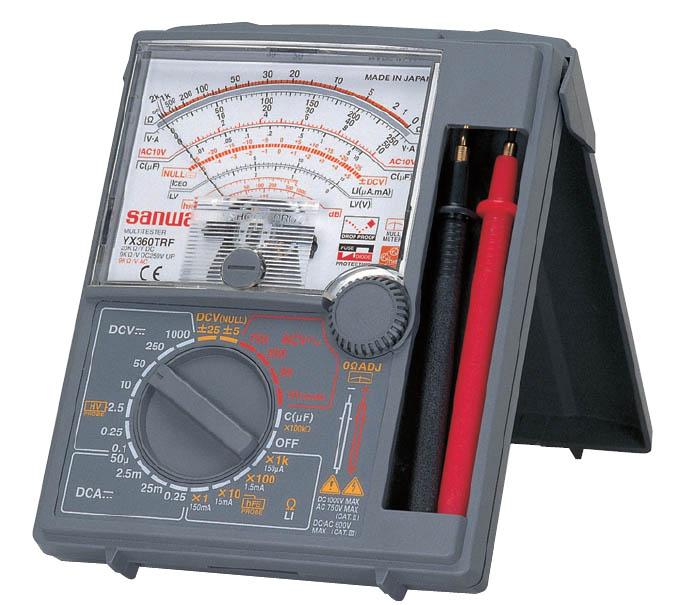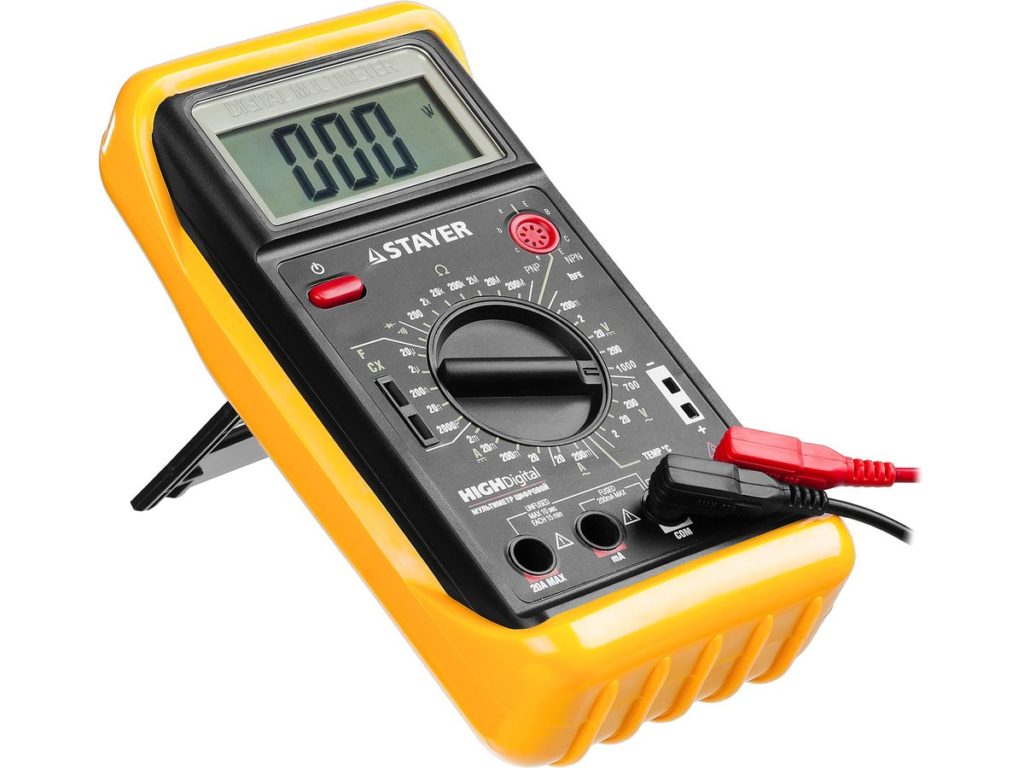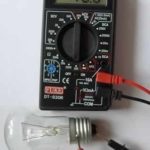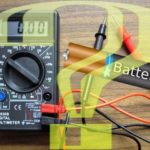How to check a battery with a multimeter and why to do it
There are a huge number of types of AA batteries. Outwardly, they are practically no different from each other, but in terms of their technical parameters they are largely different. Over time, these batteries begin to lose their charge - which means there is a need to check them periodically. This can be done with a special device - a multimeter. It is truly universal and allows you to replace several measuring instruments at once.
The content of the article
Types of batteries and their characteristics
There are several types of batteries. First of all, it is a disposable galvanic cell. Use it until it is completely discharged. Then they are disposed of and replaced with a new one. They cannot be charged, but our craftsmen sometimes neglect this rule, trying to extend the life of the battery. But only in rare cases is it possible to fill it with a charge of at least 15 percent. In other situations, it may simply explode.
In turn, disposable batteries come in salt and alkaline types. The latter have a longer service life. However, their cost can be 1.5-2 times higher.
There are also rechargeable batteries. They can be charged several times. This type of element includes lithium batteries for gadgets, as well as alkaline batteries.They differ in voltage and, of course, cost.
What can a multimeter measure?
Even the simplest multimeter is a universal device for measuring various indicators of electrical appliances. It allows you to determine voltage, current, resistance, and even conduct a routine wire break test. You can also use it to check the battery for suitability and find out what condition the electronic circuit is in.
The multimeter combines all the functions of a voltmeter, ammeter and ohmmeter. You can find two types of it on sale: analog and digital. Each of them has its pros and cons. Let's take a closer look at each of them.
The analog multimeter is equipped with a pointer with a scale on which you can observe the measurement results. On some devices (in particular, on cheap Chinese products), the scale is not implemented in the most convenient way, and it is sometimes difficult for a beginner to understand such a device. However, they are very popular because the cost of such products does not exceed a couple of dollars.
The downside of an analog multimeter is the small measurement error. To obtain higher accuracy, the trimmer resistor must be adjusted. However, if you need to get more accurate data, it is better to use a digital multimeter.
Its main difference is that the measurement results are shown on the display. Such devices have higher measurement accuracy and are easy to use, since you do not need to understand all the nuances of a graduated scale.
The device itself has two outputs to which wires are connected (red is positive, and black is ground). The nests themselves are labeled, so it’s difficult to confuse them.If you want the multimeter to work in ohmmeter mode, then just move the switch knob to the desired position.
How to check a AA battery with a multimeter
To check AA batteries, you must use a digital multimeter, since it will show more accurate results. To carry out the test correctly, the probes of the device must be installed in their sockets. Now you need to set the switch to value 20. Then take the red probe and connect it to the “plus” of the battery. Then attach the black probe to the “minus”.
The device will show the voltage, and there is nothing to worry about if the display shows a number, for example, 1.45. Such an element is suitable for operation, although it does not show the maximum voltage. It just has low current or there is minor damage to the case.
It is worth noting that if the battery is under load, it can also be checked. To do this, you need to connect it to any electrical device, and attach the multimeter probes to the contacts.
Reference. As an experiment, you can take even the simplest 3 V motor (they are installed in many toys, so this option will be optimal). During the procedure, a drop in voltage may occur. This is due to the fact that the motor works intensively and takes energy from the battery.
Checking the little finger battery
In general, there are simply no significant differences in the verification procedure itself. The only thing is that the dimensions of the little finger battery are a little smaller, which means that measuring its performance will be a little more difficult.
The verification algorithm will be as follows:
- attach probes to the measuring device;
- set the lever to the numerical value “20”;
- attach the red probe to the “plus” of the battery;
- attach the black probe to the minus.
Important! If you use regular wires instead of probes, then for convenience you can glue them with tape or tape.
How to check other types of batteries
Checking the performance of other types of batteries will also not differ significantly from the procedure described in the two previous paragraphs.
If you need to check the battery of a phone or other mobile device, simply attach probes of the appropriate color to the “positive” and “negative” contacts on the battery. If there is no marking on the element itself, then you can determine it yourself.
Important! Typically, the battery voltage of a mobile phone is 3.7 volts. If this value is higher, then most likely the battery is simply outdated and, perhaps, slightly swollen somewhere.
Another advantage of an analog multimeter is that it allows you to check even a watch battery, which is distinguished by its small size. To do this, you need to lean the black probe against the top of the “tablet”, and the red one against the side, since the plus of such a battery covers almost the entire area of the battery.
I bought another cartoon in reserve. DT-9205A. I already had these, but there are innovations here. Exactly, there is a 1.5 V mA scale. You connect the probes to the battery, and through a resistor of about 30 Ohms the ammeter shows the current consumed. Resistor inside the device. You can find out about the health of the battery.
Gleb is great
3 A
2.5 volt incandescent light bulb (used in flashlights). You connect the batteries to the poles: if the glow is bright, the battery is good, if it barely glows or doesn’t glow at all, it’s scrapped.
Each tester - VOLTOMMETER - has internal resistance. and therefore the “dead battery” may look, according to its readings, as quite suitable. However, this is not so.
To make sure that the element/battery is working, you need to switch the volt-ohmmeter to measure current in amperes. By connecting it for a second or two (to take a reading), you can see how low the battery is. Usually AA type elements give from 1A to 5A - then the same battery is still good. however, for installation in a device, it is necessary to select exactly the same current indicators of the device. If the lowest voltage is 1A, then select the required amount for the device with exactly these readings.
Different current readings after installation in the device. will lead to self-redistribution of current and the elements will fail better than you would like.
The article is nonsense. When measuring the EMF, it is impossible to say anything about the galvanic element. Read the “Handbook for Beginner Radio Amateurs.” For each element, the required load resistance is determined, and the voltage must be measured on it.
“The downside of an analog multimeter is a small measurement error.” A small error cannot be a disadvantage of the device. And when checking batteries it doesn’t matter at all. The article is too long for an amateur, and not needed at all for a professional.
Finger, little finger - what disgusting, how long will they say that.
At school I was taught that there are only 10 numbers in mathematics (0,1,2,3,4,5,6,7,8,9), everything else can be ignored......
The author does not understand the difference between "battery" and "cell".
Not a word about the fact that different types of batteries, in sizes “AA” and “AAA”, do not have 1.5v at all
What was written is a student’s essay. Weakly
Threat. In our youth, we charged ordinary salt cells perfectly, despite all the horror stories from the instructions. 🙂 The charging current was set to be small, no more than 100mA. Out of 10 elements, they “leaked” at most 1-2. It was possible to charge 2-3 times. The elements worked not 15% of the operating time of the new one, but a decent 50-60%. Saline is not lithium, there will be no explosion, but do all experiments in a tray, the electrolyte is still there. There is a risk that after 2-3 times the element will leak in the equipment, which is unpleasant. The main thing is to keep track of it on time.
The article is not about anything! Probably written by an elementary school student :)
The article was written by a person who does not understand the principle of measurement; it would be a good idea to familiarize yourself with an initial physics course, where it is described that using your method you can measure the emf of a battery, but not its performance or quality. You fail in physics!
I don’t want to call this article nonsense... but it is not an educational article!? Something from the magazines RADIO and VRL... so then they tried to teach some basics of radio engineering. Then there was no abundance of instruments, literature and... batteries themselves. A battery or battery without a load is checked for the presence of no-load (residual) voltage on it. Practically, such a freeze means nothing!
Nikolay, as a metrologist, was very surprised that a small measurement error is a minus :)
I agree with you 100%
Of course, you need to measure the short circuit current; for little fingers and fingers, the normal current is not lower than 6-7 A.
I have been checking batteries in current measurement mode for 40 years now.
And what do batteries have to do with it! CLOSEUP PHOTO OF ADVERTISED CHINESE “avometers”
This is probably for very good batteries. With low ESR. For ordinary batteries, the current is about 1-2A.
How many illiterate writers are there on the Internet? Entire articles are written. That is, if you don’t know it yourself, teach others. ))
When you measure the voltage with a cartoon, it is not necessary to observe the polarity; just think, “-” will appear on the display. The author may not even know about this. Current measurement has already been discussed above...
That’s why it’s an error, because it has both a plus and a minus.
Error is one thing, but polarity is another...
There is no need to invent anything, if the battery shows 1.3-1.4 volts (on a 2-volt scale), you can safely throw it away. No amps need to be checked. Although there are amateurs who test it on instruments, both dial gauges and multimeters.
A completely stupid, empty and worthless article. Therefore, in general, there is nothing to comment here.
Lots of offers. But it is most correct if the red probe is connected to the “10” or “20” A socket. The device will act as a load and the battery will discharge. The number will be relative. If there is the same fresh battery, then you can judge its operating time. Suitable only for “1.5” V. Cannot be held for a long time. By measuring voltage you will only know its EMF. When loaded, it can quickly sit down. To test more powerful sources with higher voltage, you can use an open spiral for an electric stove. Using the formula, calculate what resistance is needed so that there is 1 A in the circuit connecting the spiral to the poles of the power source. Clamp this section of the spiral with the probes of a multimeter, set the voltmeter to the desired limit and you can measure under load. The result is a “load fork”. You can find out the source capacity using this method.






The author told how to measure the EMF, or the voltage on the battery in the absence of a load. For salt and alkaline cells, this voltage should be higher than 1.50 V.
The main indicator of the discharge of galvanic cells is internal resistance. It grows as you age. The internal resistance of the battery is critical for equipment that consumes high current: flashlights, motors.It happens that the EMF is almost normal, but the batteries no longer “pull” the load.
The easiest way to estimate internal resistance is by short circuit current. We put the tester in current measurement mode, the limit is “10 A”. As a rule, the red probe for this is inserted into a separate socket, which is designated: 10 A Max.
We touch the probes of the element contact tester and hold it for no more than a second. And at this moment we look at the readings. The current must be greater than 1 Ampere. If it is less, the element is thoroughly “planted” and is a candidate for ejection.